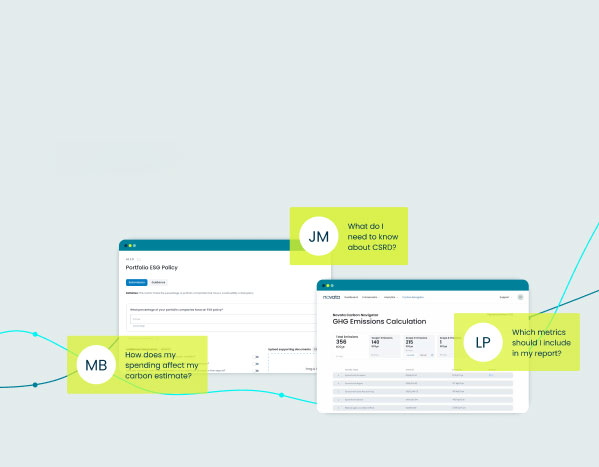This article is the first in a three-part series on addressing biodiversity loss. Read the other articles here:
- Target 15 of the Global Biodiversity Framework: Key Takeaways for the Private Sector
- Turning Target 15 into Private Market Action on Biodiversity
In 2022, the World Economic Forum ranked biodiversity loss as one of the top three risks facing our planet today. Biological diversity represents the variety of living things in an ecosystem, including its animals, plants, habitats, and sources of energy. Biodiversity is a key provider of ecosystem services and the many benefits nature provides to businesses and society. However, human-imposed land degradation, overexploitation, and climate change are accelerating biodiversity loss and threatening the health of our environment, economy, and societal well-being.
Business activity both impacts and depends on the natural resources supported by biodiversity. More than 90% of human-led biodiversity pressure is produced from the value chains of the food, energy, infrastructure, and fashion industries. The associated worth of biodiversity is estimated at more than $150 trillion annually, more than twice the global GDP. Failure to recognize the utility of biodiversity will rapidly diminish business growth and long-term success.
As species variation diminishes and ecosystems collapse, an estimated one in every five businesses faces operational risks, making biodiversity loss a critical threat to address. Understanding the background, scope, and key drivers of biodiversity loss is a crucial first step for corporations looking to integrate biodiversity protection into their business strategy and ensure organizational longevity.
Understanding Biodiversity
Biodiversity is critical for environmental stability and human existence, and areas rich in biodiversity tend to be healthier and more resilient than others. They offer buffers from environmental stressors and allow ecosystems to restore imbalances quickly after disruptions.
Buffers perform invaluable ecosystem services. One example of such a safeguard is the role that tree and plant abundance take on in their ability to absorb carbon dioxide from the atmosphere as they grow. The carbon is converted and stored in branches, leaves, trunks, and roots in the soil. However, when forests are cleared or burnt, the stored carbon is released into the atmosphere as carbon dioxide, resulting in the build-up of greenhouse gasses and the acceleration of global warming. One good example of this is the devastating impact of the deforestation of the Amazon. The loss of biodiversity has parallel implications. Species variety also offers a safety net so that if one element of an ecosystem is depleted or becomes unavailable, another may be used in its place.
Biological diversity supports humanity in countless ways, including providing food, fuel, building material, and crop support. The less obvious benefits include the ecosystem maintenance supplied through water purification, soil fertilization, and climate regulation. Yet, despite its unequivocal importance, biodiversity is declining faster than ever seen in human history. The ecological effects of biodiversity loss are far-reaching and most commonly exemplified through reports of increased species extinction, habitat and native species loss, land and ocean degradation, and invasive alien species abundance. The effects of biodiversity loss, however, seep outside of environmental borders and threaten business and economic stability.
Economic Implications of Biodiversity Loss
Recently, businesses have started to pay closer attention to the impact that biodiversity loss and resource depletion has on ecological health and economic well-being.
Take the role of pollinators, for example. Pollination is the largest agricultural contributor to output worldwide. The monetary value of global crops relying on pollinators is estimated between $235 billion and $577 billion annually. However, in the past 70 years, the bumblebee population has declined by 96%, honeybees by 60%, and over the span of just two decades, the monarch butterfly population by 80%. A continued loss in pollinator diversity will harm both the global food chain and our human livelihood. With a market highly dependent on natural resources and approximately $44 trillion of yearly economic value generation dependent on nature, economic stability is also jeopardized.
Private Sector Contributions
To begin addressing biodiversity loss, the private sector should be aware of the potential impact of business activities. For instance, business operations can impact land use and waste generation, which contribute to habitat loss and degradation, erosion, species loss, pollution, and the introduction of non-native species that disrupt pre-existing ecosystems.
Ecosystems are gradually moving to critical thresholds or irreversible tipping points that, if crossed, will substantially alter their structure, function, and service provision. These changes will have far-reaching economic and societal impacts that will either be impossible or costly to reverse.
There is a strong business case for private companies to scale up engagement in biodiversity-related initiatives. European companies are leading the charge on sustainability performance due to regulations such as the Corporate Sustainability Reporting Directive (CSRD). The CSRD, which entered into force on January 5 and will apply to large EU companies starting in 2024, mandates the disclosure of detailed, audited, and comparable ESG data from public and private companies in the EU. The exact information required will be specified in the European Sustainability Reporting Standards (ESRS), expected to be finalized in June 2023, and will include a standard on biodiversity and ecosystem loss. The standard defines specific biodiversity-related policies, targets, action plans, and performance measurements for applicable companies to disclose.
Biodiversity loss will not wait for global frameworks to become standard or mandatory, which is why private companies (regardless of location) must start their biodiversity journey now. Understanding the scope and identifying the impact of the business on biodiversity loss is the first step toward strategic integration.
As our natural ecosystems decline, the possibility for long-term business success dwindles while the cost of waiting rises steadily. Without multi-stakeholder and cross-sector engagement, the issues of biodiversity loss will persist, and our environmental, economic, and human health will hang in the balance.






